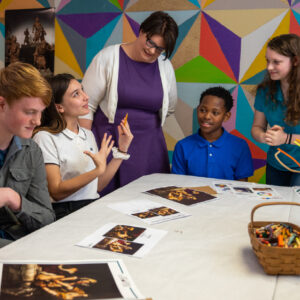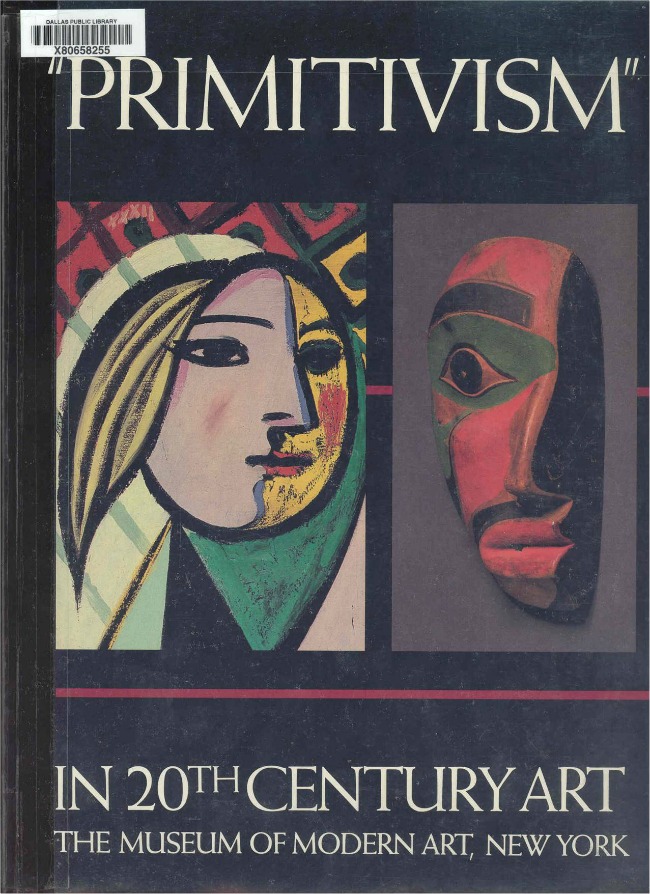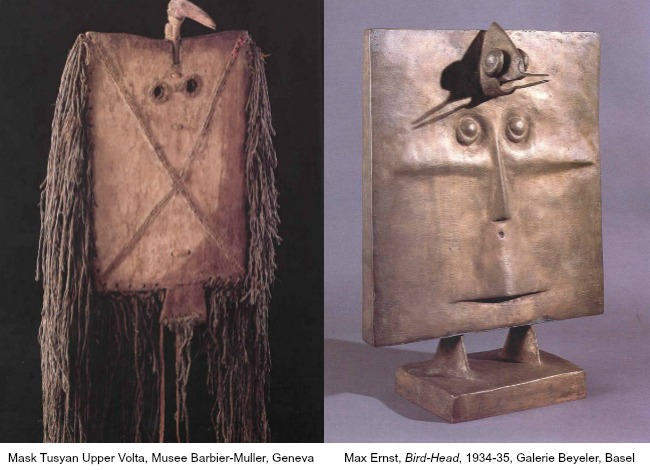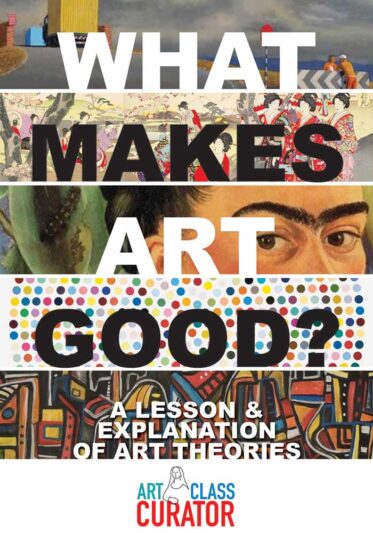All good people agree,
And all good people say,
All nice people like Us, are We
And everyone else is They;
But if you cross over the sea,
Instead of over the way,
You may end by (think of it!) looking on We
As only a sort of They.— Rudyard Kipling, The fifth and last verse of “We and They,” 1926.
Today, I am joining bloggers from Multicultural Kid Blogs for the series, A-Z of Raising Global Citizens. I was lucky enough to get the letter X for the series, but I think I’ve come up with a good one.
X is for Xenophobia.
Xenophobia is an incredibly important topic for art teachers and parents to address with your kids and students. Please keep reading to learn about several great art examples and a lesson plan to teach this important topic.

Get the Full Lesson!
This Lesson is in The Curated Connections Library!
Find the full lesson from this post along with hundreds of other art teaching resources and trainings in the Curated Connections Library. Click here for more information about how to join or enter your email below for a free SPARKworks lesson from the membership!
Xenophobia and Ethnocentrism
Xenophobia is “an unreasonable fear or hatred of foreigners or strangers or of that which is foreign or strange” (Source: Dictionary.com).
Along with xenophobia, another important concept for this discussion is ethnocentrism which is “imposing upon the art of another culture the meanings and prejudices of our own” (Source: Sayre, p. 28). Artlex.com defines ethnocentrism as “the tendency to see one’s own ethnic group as the norm and all others as marginal; a form of racism” (artlex.com).
In both terms, it is an “Us vs. Them” mentality. Our way is the correct way, and their way is “other” or different.
Xenophobia, Ethnocentrism, and Studying Non-Western Art
When I teach Non-Western art, I usually always start the unit of study with a lesson on cultural sensitivity and ethnocentrism using the three examples below. In the next section, I will give you a lesson outline with discussion questions you can use in your classroom incorporating these examples.
Ethnocentrism Lesson Example #1: Hindu Sculpture
At the end of the 19th century, Mark Twain visited the holy city of Benares, India also known as Varanasi. When he saw the Hindu art there, he called it “crude, misshapen, and ugly.” He also said they “flocked through one’s dreams at night, a wild mob of nightmares” (Source: Cotter).

What is wrong with Twain’s statement?
I hear similar things like Twain’s statement pretty regularly when I cover non-Western art in my classes. Students may call something “weird” or laugh at a work by someone of a different culture. When our students (and we do it too sometimes; I don’t think anyone is really immune from this) make judgments about the artworks of other cultures using their own Western perspective, they are deepening the divide between cultures and people.
Twain called Hindu sculpture crude and ugly, but to Hindu people, “the dancing Shiva is, by contrast, a dynamic, joyous, cyclical image” (Cotter). Hindu sculpture shows bodies with manipulated proportions in art and curvy, sinuous figures. To those who made these images, these figures show ideal form. These sculptures are about beauty and life.
Ethnocentrism Lesson Example #2: “Primitivism” in 20th-Century Art
In 1984, the Museum of Modern Art had an exhibition called “Primitivism” in 20th Century Art. It took artworks by 20th-century artists like Pablo Picasso, Max Ernst, Edvard Munch, Paul Gauguin, Jackson Pollock, and more and put them next to artworks from “primitive” cultures from Polynesia, Africa, and the Americas that had similar features to the 20-century work.
This was highly controversial.
The curator of this exhibit essentially took these works of non-Western art, stripped them of their context, and then assigned them all together under the term “primitive.” Africa and Polynesia are on opposite sides of the planet, yet they were all grouped together into this term “primitive.”
Ethnocentrism Lesson Example #3: Greek Sculpture vs. African Masks
The last example comes from the writing of another author, Kenneth Clark. In his book Civilisation from 1969, he compares Apollo Belvedere with an African mask. Here is what he said:
I don’t think there is any doubt that the Apollo embodies a higher state of civilization than the mask. They both represent spirits, messengers from another world—that is to say, from a world of our own imagining. To the Negro imagination it is a world of fear and darkness, ready to inflict horrible punishment for the smallest infringement or a taboo. To the [Greek] imagination it is a world of light and confidence, in which the gods are like ourselves, only more beautiful, and descend to earth in order to teach men reason and the laws of harmony.
What’s the issue with this one? A “higher state of civilization.” Us = higher. Them = lower.
Now we can’t sum up all of the masks of Africa in one stretch here. Africa is a HUGE continent with tons of countries and cultures and histories. But, that is precisely what Clark does in Civilisation. He doesn’t even say what culture the mask he is referring to is from. The mask he is using to compare is one that his buddy bought and hung up on the wall. I’m not exaggerating here.
But let’s say for comparison’s sake that this is the mask he was referring to. It is a portrait mask from the Baule people of the central Ivory Coast in southern West Africa. A Baule carver says this of the mask, “The god is a dance of rejoicing for me. So when I see the mask, my heart is filled with joy.” Another carver says that the mask “makes us happy when we see it.”
That hardly describes “a world of fear and darkness,” don’t you think?
(Source: Henry Sayre, A World of Art 5th Edition, 2007)
Xenophobia and Ethnocentrism Lesson Plan Outline
I usually accompany this lesson with an introduction to a group assignment where students research and present about art from around the world. I use this lesson is for high school/college.
Please note, this post includes Amazon affiliate links. As an Amazon Associate I earn from qualifying purchases.
Here’s my ethnocentrism lesson plan outline.
1. Think-Pair-Share Warm-up. Have students answer the following questions in their notes and then discuss answers in small groups.
- What is culture?
- What makes up one’s culture?
- How does your culture impact how you view the world? And how you view art?
2. Read and discuss as a class the poem I put at the top of this post.
3. Show Shiva Nataraja alongside the quotation from Mark Twain. Ask students what is wrong with what Twain said. Discuss and provide information about Hindu sculpture as explained above.
4. Tell students about Primitivism MOMA exhibit and ask them why do they think the exhibit was so controversial? Show examples of juxtapositions from the exhibit (I used scanned pages from the exhibit catalog that I checked out from the library, so I can’t post them here.) Ask students what the curators could have done differently to minimize the controversy.
5. As a homework or in-class writing assignment, have students read the quotations from Kenneth Clark and the Baule carver above alongside the images of the Apollo and the Baule mask. Have students write their answers to the following questions:
- What are your initial reactions to reading the above quotations? How do you feel about what was said?
- Describe Kenneth Clark’s viewpoint in terms of what we discussed in class about culture and ethnocentrism.
- What was his mistake, if any, when interpreting these sculptures?
Thanks for reading. How do you teach cultural sensitivity with your students? Share your ideas in the comments!
Mentioned on the Art Class Curator Podcast…
Works Cited:
- Sayre, Henry M. (2005). A World of Art (4th Ed.). Prentice Hall.
- Holland Cotter, Eastern Art Through Western Eyes, New York Times, July 10, 1994
- Janetta Rebold Benton and Robert DiYanni, An Introduction to the Humanities (Fourth Edition), Pearson. 2011. Chapter 21
- Kenneth Clark, Civilisation, 1969 accessed online at link, 6/23/2015









Love this post! Absolutely brilliant! Studying artwork can be such a wonderful way to “enter” another culture but at the same time it can also be a way of “othering” it even further. Love these strategies for getting students (and teachers!) to dig deeper.
Thank you! It’s really something we always need to be thinking about.
THANK YOU FOR THIS! I teach in a very diverse school, district, city, and yet I still see/hear that “us” vs “them” mindset. What a fabulous way to address this… through ART!
LOVE, LOVE, LOVE!
You’re welcome! 🙂
I love this!! I think its a great lesson for older students. But how do we address the issue in younger students before the xenophobia becomes so deeply ingrained? Kids are so willing when they’re younger to examine and accept new things, I worry that by highschool they’ve already made up their minds
I think it’s important to really focus on the language we use. For example if a student calls an African mask “creepy” or the whole joke of when you say black or white they say “you’re racist.” It’s a subconscious othering that happens so subtly that we have to be aware of! I wish I had great answers for it.